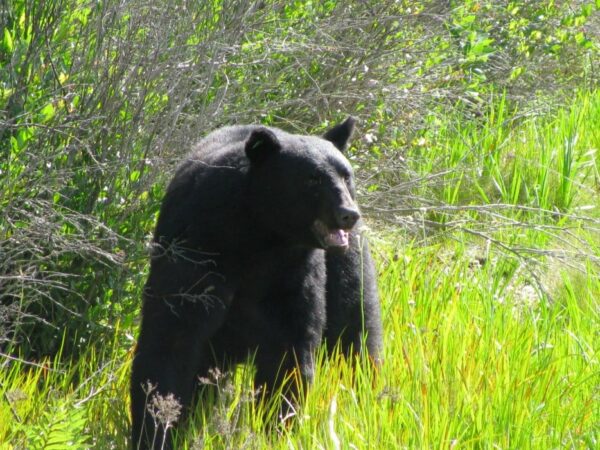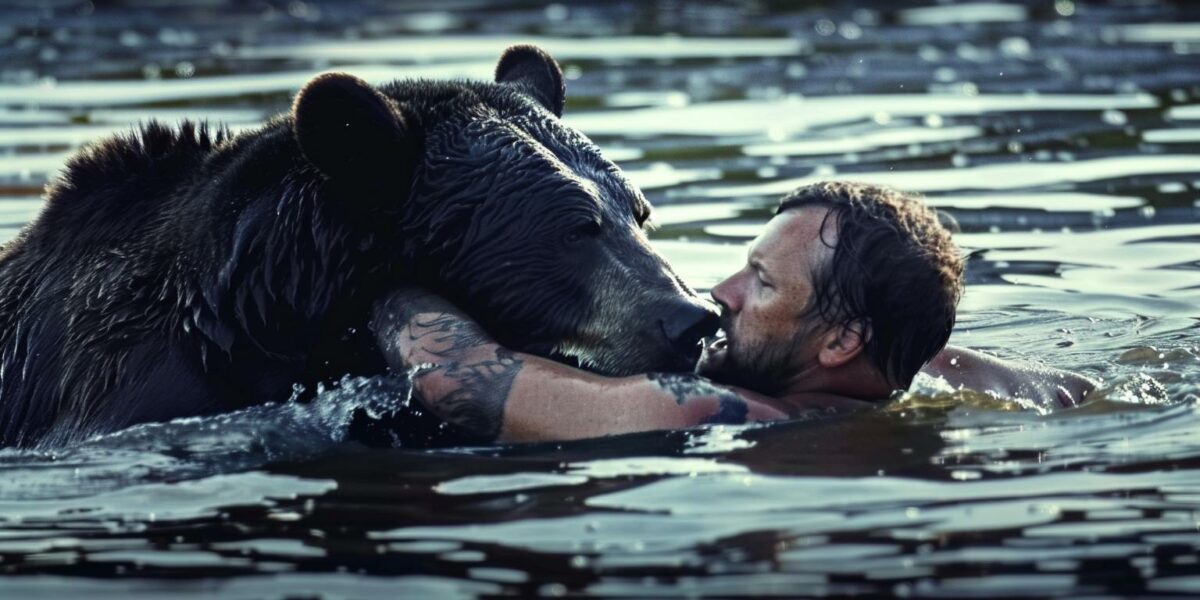The Harrowing Encounter
Last week, a gigantic black bear found itself in a perilous situation in Alligator Point, Florida. The bear, disoriented and frightened, wandered into a residential area, prompting immediate action from local wildlife officers. Their plan was straightforward: tranquilize the bear and relocate it to a safer habitat. However, the situation took a sudden and dramatic turn when the tranquilizer caused the bear to panic and bolt straight for the ocean.
As the bear plunged into the chilly waters of the Gulf, it began to swim, driven by instinct and fear. But soon, the effects of the tranquilizer set in, and the once powerful creature started to grow drowsy and began to drown. On the shore, Adam Warwick, a biologist with the Wildlife Commission, witnessed the unfolding drama. Driven by a surge of adrenaline and compassion, he made a split-second decision that would lead him into the heart of the danger.
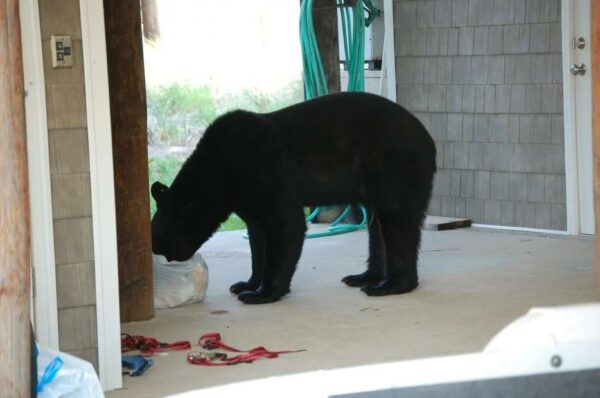
Adam plunged into the ocean, swimming determinedly toward the struggling bear. “It was a spur-of-the-moment decision. I had a lot of adrenaline pumping when I saw the bear in the water,” he later recounted. The scene was nothing short of dramatic, with the large bear becoming increasingly weak and Adam, the only thing between it and a tragic demise.
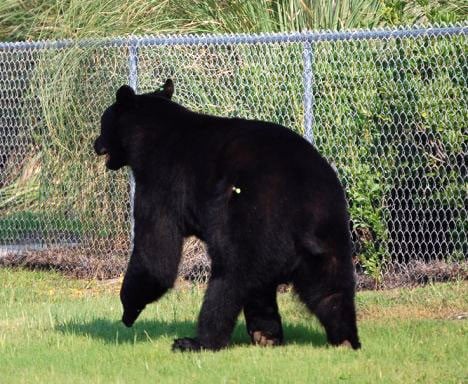
There, in the deep waters, a battle for survival ensued. The bear, in its desperation, clambered onto Adam, trying to keep afloat. Adam, struggling to maintain his own buoyancy, grasped the bear by the scruff of its neck, keeping its head above water. Together, they made a slow, laborious progress toward the shore, fighting against exhaustion and the weight of the bear.
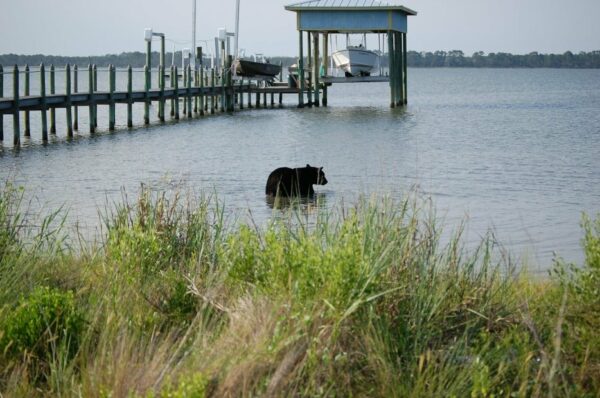
A Race Against Time
The shore was still a good distance away, and every second in the cold water sapped more of their strength. Adam knew he couldn’t give up. “I just kept telling myself to stay calm and not let go,” he said. The bear, though massive and powerful on land, was utterly vulnerable in the water. Its life literally hung by the scruff held in Adam’s firm grip.
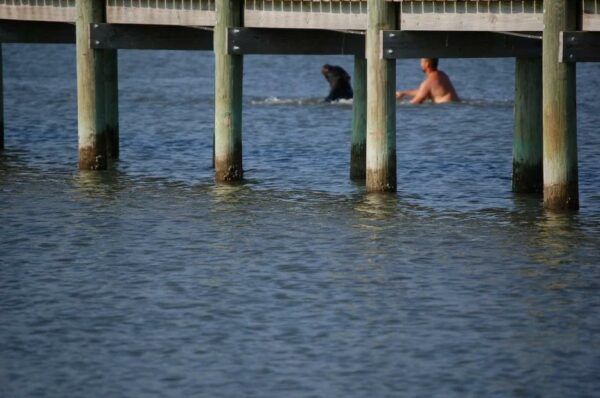
Meanwhile, on the shore, the situation was frantic. The wildlife team prepared to assist as soon as the duo reached the beach. Spectators held their breath, watching the incredible rescue unfold. Adam, drawing on reserves of strength he never knew he had, dragged the 400 lb bear through the water. It was a Herculean effort, and slowly but surely, they edged closer to salvation.
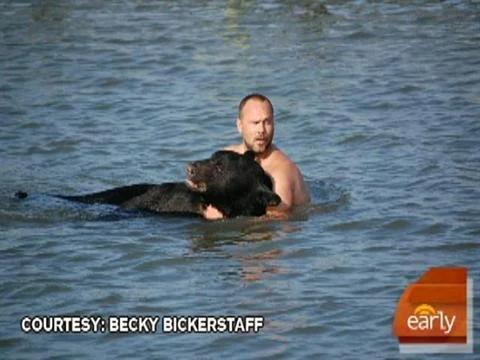
Finally, after what seemed like an eternity, they reached the shallows. Here, other team members rushed to help, pulling the exhausted bear onto a stretcher. They used a tractor bucket to lift the bear, ensuring it was secure and safe. The bear, now out of immediate danger, was transported back to its home in the Osceola National Forest. Relief and joy spread among the team, but none were as relieved as Adam.
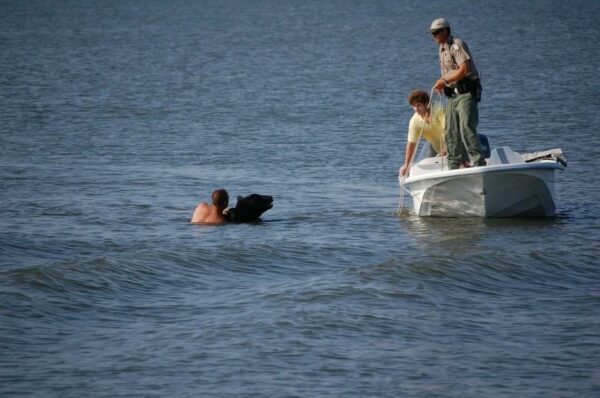
The bear, though dazed, seemed to recognize the efforts of its rescuer. In a poignant moment, as they parted ways, there appeared to be a look of appreciation in the bear’s eyes. “Call me crazy, but I think that’s a look of appreciation on his face,” Adam reflected with a weary smile. The bear, finally back in its natural habitat, seemed to agree.
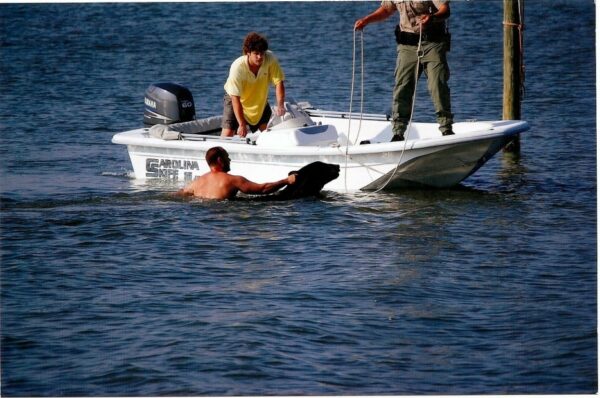
Reflections on a Brave Act
Looking back on that day, Adam feels a mix of awe and humility. “I’m not a hero,” he insists. “I just did what I felt was right.” But to those who witnessed his act of bravery, Adam is nothing short of a lifesaver. The bear’s plight could have ended in tragedy if not for his quick thinking and fearless action.
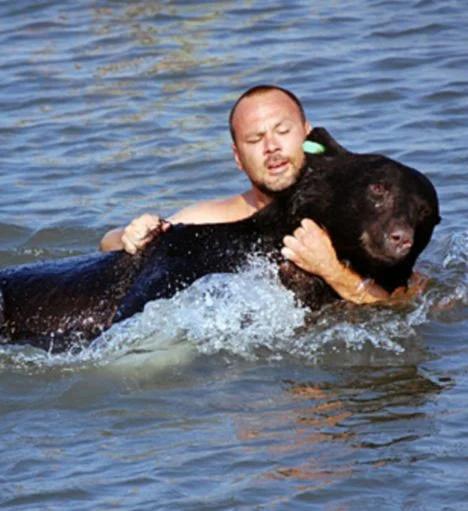
The incident has sparked discussions about wildlife management and the interactions between human settlements and animal habitats. It serves as a stark reminder of the unexpected situations that can arise when wildlife wanders into human areas. The successful outcome of this incident has been a testament to the training and dedication of wildlife officials and the community’s respect for nature.
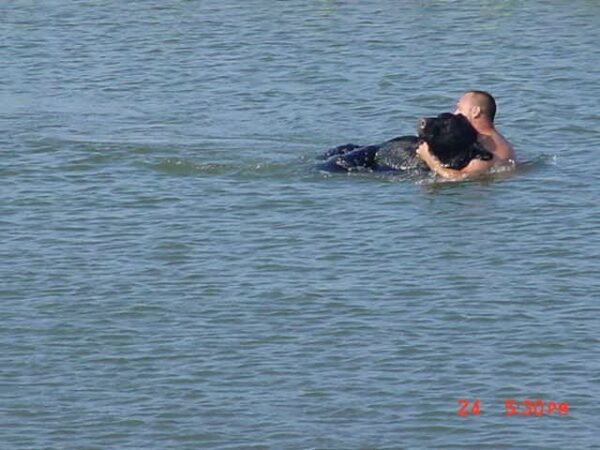
For pet lovers and wildlife enthusiasts, Adam’s story is a thrilling and inspiring tale. It underscores the profound connections that can form in moments of crisis between humans and animals. This story transcends the usual narratives, offering a glimpse into the raw, unpredictable aspects of nature and the human spirit’s capacity for compassion and heroism.
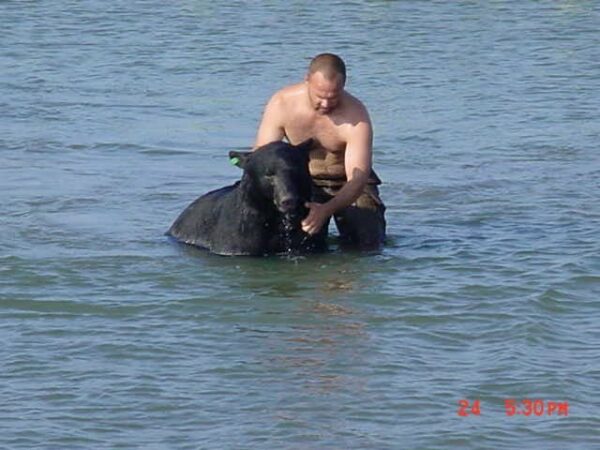
As we share this story, let it be a reminder of the courage and the unspoken bond that can emerge in the face of adversity. It’s a call to all of us to respect, protect, and admire the wildlife with whom we share our spaces. After all, on that fateful day on the shores of Alligator Point, it wasn’t just a bear that was saved; it was a profound lesson in empathy and courage that was imparted to all who bore witness.
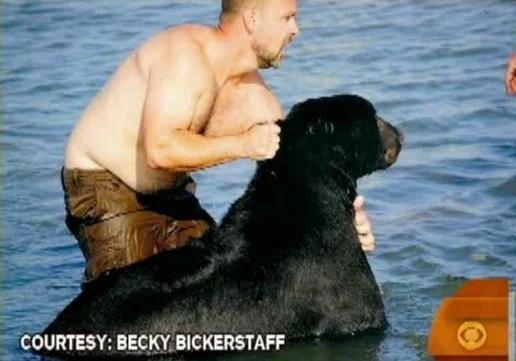
Embracing Our Wild Neighbors
As communities expand and encroach on natural habitats, encounters like the one in Alligator Point are likely to increase. Each encounter, each moment of unexpected contact between humans and wildlife, offers a chance to learn and grow. It challenges us to think about how we can coexist peacefully and sustainably with our wild neighbors.
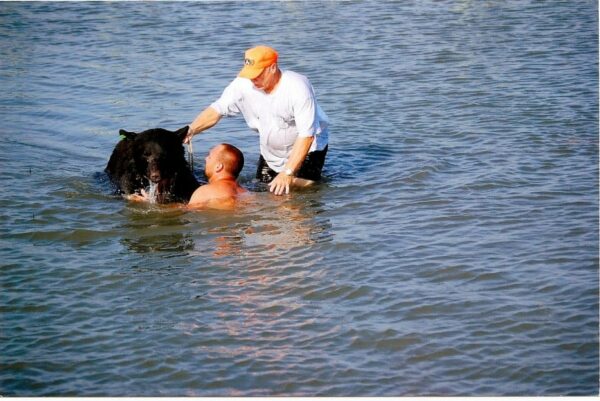
Adam Warwick’s story is a powerful narrative about human impact on wildlife and the responsibilities that come with it. It’s about not just coexistence but also understanding and respect for the creatures that share our world. Whether it’s a bear, a bird, or any other wild animal, each has a role in the ecosystem, and each deserves our consideration and care.
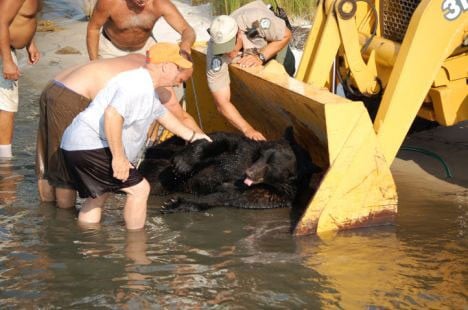
In our daily lives, it’s easy to forget that we are part of a larger system, one that includes the many animals that roam the land and the sea. Stories like Adam’s remind us of our place in that system and the importance of acting as stewards of the environment. They inspire us to be more aware, more compassionate, and more proactive in our efforts to support wildlife conservation.
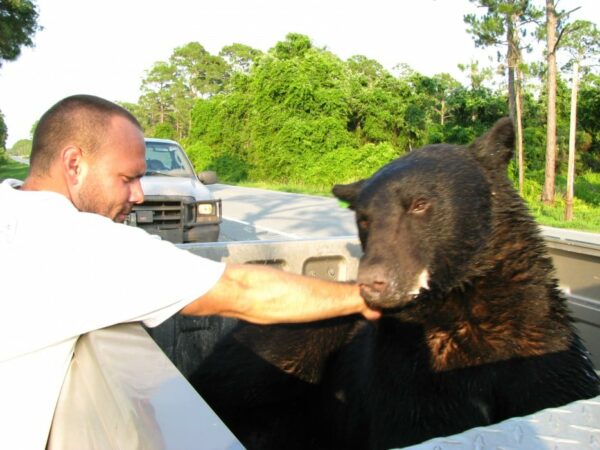
So, let’s take a page from Adam’s book. Let’s be vigilant, let’s be caring, and let’s make sure our actions contribute to the well-being of all creatures, big and small. After all, every animal, from the majestic bear to the smallest insect, plays a part in the tapestry of life, and each deserves a chance to thrive in their natural habitat.
